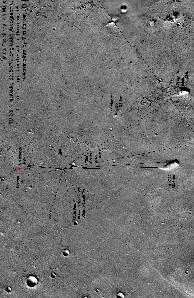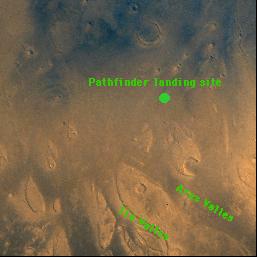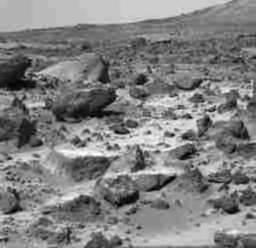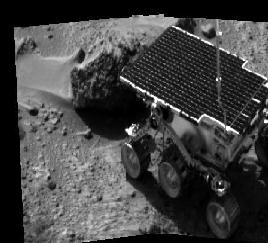Click on image for full size
Image from: NASA/JPL
The Mars Pathfinder Landing Site
Mars Pathfinder landed in a valley of Mars called Ares Vallis, shown in this picture. Ares Vallis is near Xanthe Terra, which can be seen on the large map of Mars. The picture to the left is low-resolution and turned sideways. You have to click on the image to see everything.
This spot was chosen for the landing site because scientists thought that like Earth, Mars had "flood plains", that is fields created by rivers. On a floodplain, water carries different kinds of rocks from higher up to lower places and leaves them there. Ares Vallis is just such a plain. Thus scientists expected to find many different sorts of rocks to experiment with. Rocks may have come from mountains around the landing site, some of which are 30 kilometers away, to the south, as viewed in the big image. These outcroppings may be composed of andesite or basalt, both of which are igneous rock.
Following the Rover experiments however, the origin of the rocks of the plain became less clear. Reasons why the landing site may be different than expected include:
- the nature of the flood plain, which the Rover observed up close
- the presence of nearby impact craters, particularly one called "Big Crater", better seen in the big image.










